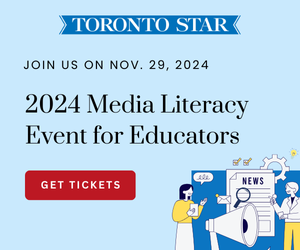
There is a lot of “fake news” on the Internet. A new study shows that many young people in the United States have a hard time telling “real” from “fake” news.
Fake news is exactly what it sounds like. It’s an article that may look just like any other news article–except that it’s not true. Unfortunately, many people can’t tell the difference.
Young people, especially, tend to be fooled by fake news, according to a study done by the Stanford History Education Group (SHEG).
The study asked 7,804 students in the United States to judge articles on Facebook, Twitter, blogs, readers’ comments on news sites and photographs. They tested students in three age ranges: middle-school, high school and university.
According to Stanford University’s website, “middle schoolers (were asked) to explain why they might not trust an article on financial planning that was written by a bank executive and sponsored by a bank. [In other words, an article about money, written by people from a bank.] The researchers found that many students did not cite authorship or article sponsorship as key reasons for not believing the article.”
Other students were asked to look at articles on a website, and try to figure out if the articles were news stories or advertisements. Even when the words “sponsored content” were on the article, some students said they believed it was a “real” news article.
The study also found that university students tended to believe a website if it looked polished and if its “About” page sounded good. Once they thought the website had credibility (was good), they tended to more readily believe the articles posted on it.
The study was led by Stanford professor Sam Wineburg. On the Stanford website he said his team will use the research to help teachers better instruct students about how to spot fake news.
RELATED LINKS
Here is a pdf with an executive summary of the results of the study. The executive summary includes a look at the Slate website page that was used in the study–students were asked “is this an ad or an article?” It’s worth a look; scroll down to page 9. On page 12 you’ll find examples of student responses.
The Stanford University website has more information about the study here.
How can educators help kids to more effectively spot fake news? Stanford professor Sam Wineburg’s suggestions (published by Huffington Post; this link was provided to TKN by Wineburg).
CURRICULUM CONNECTIONS
By Joyce Grant
Writing/Discussion Prompt
How do you know this article isn’t fake–maybe there never was any study?
In writing this article, author Joyce Grant did wonder whether the article about the study, itself, was fake — maybe it was a big practical joke to see which news outlets would spread around a fake article on fake articles! So, in order to verify the information, Grant emailed professor Sam Wineburg, who led the study, and asked him some questions about it. She also used several sources to read about the study, including npr (a known, credible news source in the United States) and the Stanford University website. She also read the study’s “executive summary” document. Lastly, when she gave facts in the article, she made sure to point out where she got them, or who said something. That helps readers know where she got her information and makes it a bit easier for them to decide for themselves whether they trust it.
What (if anything) helps you know that TeachingKidsNews.com is a credible (good) website? What else could TKN provide or add to help students be more certain of its credibility?
Reading Prompt: Making inferences/interpreting texts
Why does it matter that the article on financial planning was written by a bank executive? Give three reasons why knowing who wrote something could change the way you judge an article.
Junior
Use stated and implied ideas in texts to make inferences and construct meaning (OME, Reading: 1.5).
Intermediate
Develop and explain interpretations of increasingly complex or difficult texts using stated and implied ideas from the texts to support their interpretations (OME, Reading: 1.5).
Language Feature: Quotation Marks
Quotation marks have many different purposes. Read carefully through the article and explain how quotation marks are used by Joyce Grant. Why do you think she chose to use quotation marks around words such as “real” and “fake”?







